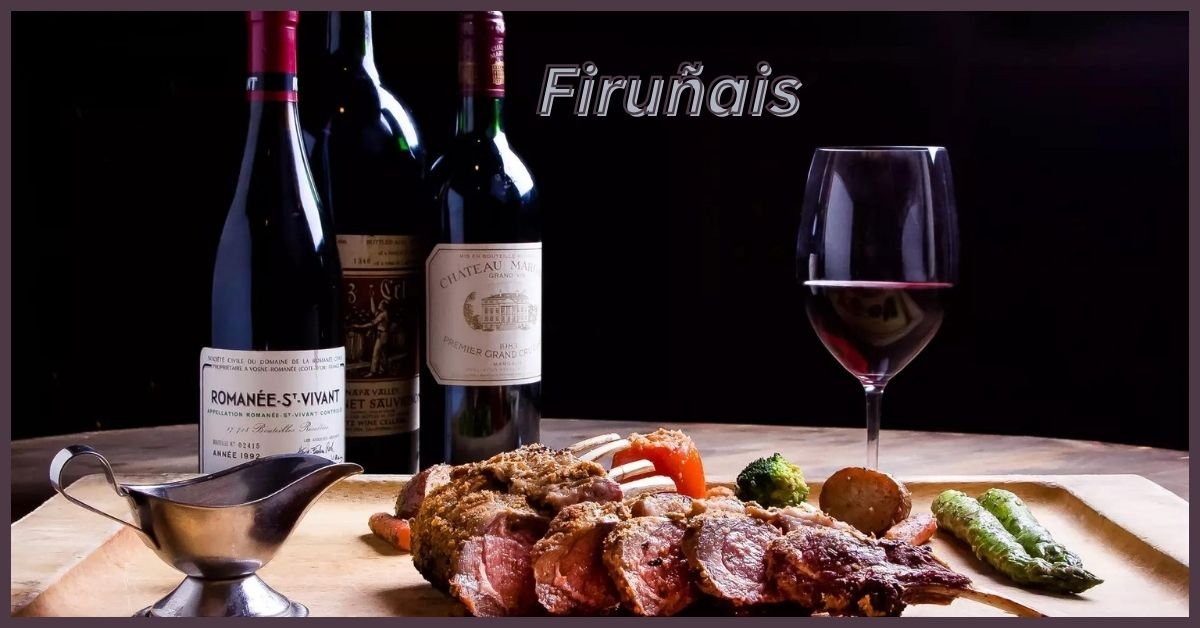Introduction: Understanding Firuñais and Its Cultural Significance
Firuñais, a term synonymous with cultural preservation and identity, holds a deep-rooted significance in the communities where it originated. The legacy of Firuñais spans centuries, evolving from a set of local traditions to a symbol of shared history and cultural pride. This article explores the origins, influence, and lasting impact of Firuñais, providing a comprehensive view of its importance in shaping cultural identities.
Exploring Firuñais is about its past and how it continues to influence present-day practices. From its role in ceremonies and social structures to its influence on modern cultural movements, Firuñais serves as a critical element in preserving cultural heritage.
The Origins of Firuñais
Historical Background of Firuñais
The history of Firuñais dates back to ancient times, originating in regions where communities were closely tied to the land, their customs, and rituals. While the exact beginnings of Firuñais are debated among scholars, it is generally believed that the tradition arose as a way to celebrate seasonal cycles, agricultural milestones, and social gatherings that bound communities together.
In its early days, Firuñais played an essential role in communal life. People gathered to mark important events like harvests, births, and religious ceremonies. These gatherings were not only about celebration but also about reinforcing the bonds within the community. Over time, Firuñais evolved from these practices into a broader cultural framework, representing both spiritual and social significance.
Cultural Roots and Symbolism
At its core, Firuñais is deeply symbolic. The tradition is often associated with renewal, unity, and continuity themes. Early rituals within Firuñais focused on paying homage to nature, ancestors, and divine forces believed to govern the community’s well-being. Participants would engage in dances, songs, and ceremonial acts, symbolizing the eternal cycle of life, death, and rebirth.
In many ways, Firuñais acted as a bridge between the physical and spiritual worlds, uniting the living with their ancestors and the natural world. This connection was vital in maintaining the cultural integrity of these early societies.
The Evolution and Spread of Firuñais
Firuñais in Different Regions
Though Firuñais originates in specific locales, the tradition spread to neighbouring regions, adapting to the local cultures while maintaining its core elements. As it moved across geographical boundaries, the practices associated with Firuñais incorporated new elements, including language, music, and storytelling specific to each region.
In some regions, Firuñais became closely tied to religious institutions, with local deities and beliefs integrated into the tradition. In others, it remained a purely secular practice, focused on community-building and celebrating life’s milestones. Despite these regional differences, the essence of Firuñais remained intact, serving as a unifying cultural force.
Modern-Day Firuñais: The Blend of Old and New
In today’s world, Firuñais continues to thrive, albeit in a more modernized form. As communities modernize and globalize, they have adapted Firuñais to fit contemporary lifestyles while honouring the tradition’s roots. Today, Firuñais can be seen in rural and urban settings, celebrated in festivals, social gatherings, and even educational programs that teach younger generations about its significance.
Firuñais has also become a symbol of resistance against cultural erosion. In many communities, it is actively promoted to preserve their unique identity in the face of globalization. This modern adaptation has allowed Firuñais to remain relevant and vital even as the world changes.
The Influence of Firuñais on Contemporary Culture
Impact on Art and Music
Firuñais has had a profound influence on the arts, especially in the realms of music, dance, and visual art. Traditional songs associated with Firuñais are often passed down through generations, maintaining their original melodies and lyrics. In many communities, these songs are performed during critical cultural events, keeping the memory of past generations alive.
The visual arts, too, have been shaped by Firuñais. Many artists draw inspiration from the symbols, motifs, and stories embedded in Firuñais, creating works that reflect the tradition’s deep cultural and historical significance. These artistic expressions help preserve the legacy of Firuñais while introducing it to new audiences.
Social and Political Influence
Beyond the arts, Firuñais also plays a role in social and political life. It serves as a tool for social cohesion, bringing communities together to celebrate their shared history and values. In some regions, Firuñais has been used as a form of peaceful protest, where communities gather to affirm their identity in the face of external pressures.
Politically, Firuñais has become a symbol of cultural autonomy. Governments and organizations in regions where Firuñais is practised often support its preservation, recognizing the tradition’s importance in maintaining social harmony and a sense of belonging.
Challenges and Preservation of Firuñais
Threats to Firuñais in the Modern Era
Despite its enduring influence, Firuñais faces several challenges in the modern era. The rapid pace of globalization, urbanization, and the impact of digital culture have all contributed to the erosion of traditional practices. Younger generations, in particular, may feel disconnected from the traditions of their ancestors, leading to a decline in participation.
Additionally, external pressures such as political conflict or economic instability can threaten the preservation of Firuñais. In some cases, communities have been displaced, taking only fragments of their traditional practices.
Efforts to Preserve and Revive Firuñais
However, efforts to preserve Firuñais are ongoing. Cultural organizations, local governments, and even international bodies have recognized the importance of safeguarding this tradition. In many places, Firuñais is taught in schools, celebrated in public festivals, and included in heritage preservation programs.
Some communities have also turned to digital platforms to share Firuñais with a broader audience. Online documentaries, virtual festivals, and social media campaigns have all been used to educate people about the tradition and its significance. These efforts have helped keep Firuñais alive in the modern world, ensuring that future generations can continue celebrating its rich legacy.
The Future of Firuñais: A Living Tradition
The future of Firuñais looks promising as efforts to preserve and adapt the tradition continue to grow. While the world changes, the core values and symbols of Firuñais remain relevant, providing a source of strength and identity for those who practice it. As long as communities value their heritage, Firuñais will endure.
In many ways, the future of Firuñais is a reflection of its past: a tradition that has continually evolved, shaped by the people who practice it. Whether through traditional ceremonies or modern interpretations, Firuñais remains a living tradition that continues to inspire and unite communities across generations.
FAQs About Firuñais
What is the meaning of Firuñais?
Firuñais refers to a cultural tradition encompassing rituals, celebrations, and practices tied to the history and identity of specific communities. It often includes music, dance, storytelling, and ceremonies that mark important life events.
Where did Firuñais originate?
The origins of Firuñais are believed to be rooted in ancient communities that relied on agricultural cycles and seasonal events to structure their social and spiritual lives. Over time, the tradition spread and adapted to different regions.
How has Firuñais evolved?
Firuñais has evolved from local practices into a broader cultural tradition. While maintaining its core themes of unity and renewal, it has adapted to include modern elements such as digital storytelling and online festivals.
Why is Firuñais important in contemporary culture?
Firuñais remains a vital part of cultural identity for many communities. It serves as a way to preserve heritage, foster social cohesion, and resist the homogenizing effects of globalization.
What are the challenges faced by Firuñais today?
Firuñais faces challenges such as cultural erosion, declining participation among younger generations, and the impact of globalization. However, efforts to preserve the tradition through education and digital platforms are helping to keep it alive.
How is Firuñais being preserved for future generations?
Efforts to preserve Firuñais include educational programs, public festivals, and the use of digital media to reach wider audiences. These initiatives help ensure that the tradition continues to thrive.
Conclusion: The Enduring Legacy of Firuñais
The legacy of Firuñais is one of resilience, adaptability, and cultural pride. Despite facing numerous challenges, it has remained an essential element of cultural identity for countless communities. As long as efforts to preserve and promote Firuñais continue, the tradition will survive and evolve, offering new ways for people to connect with their heritage.
The journey of Firuñais is far from over—it remains a living, breathing tradition that continues to shape the present and inspire the future.




